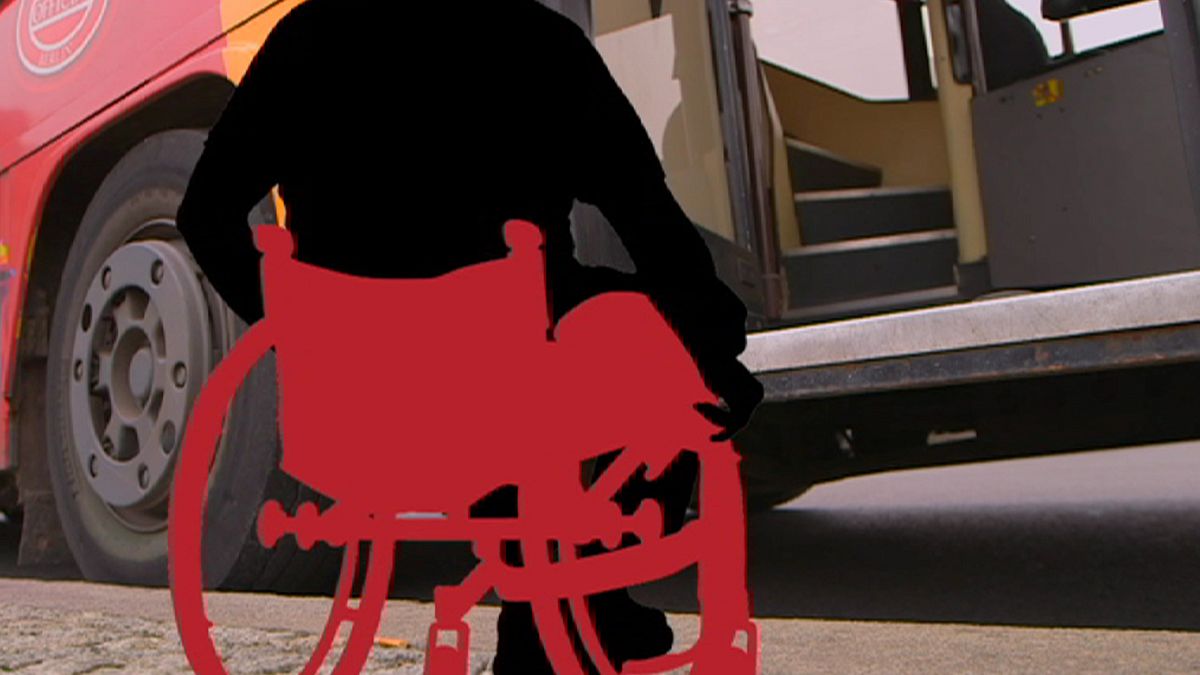Getting around or going on holiday are rights that most of us take for granted. But if you have a disability, the barriers are all too evident. Today more and more cities are trying to become more accessible, following Berlin’s lead.
“For me the greatest problem is logistical. And then we have to find adapted accommodation, where we can feel at home. It’s very difficult,” said Katrina Voigt, a student who uses a wheelchair.
In most European cities accessibility for all is, as of now, a legal obligation. But making it a reality is taking time and there is a long way to go.
The German capital has been actively putting such policies into place since the 1990s, and its efforts have been recognised this year with a special European prize, the Access City Award 2013. The entire Berlin bus fleet is already equipped with wide-access doors. The target for 2020 is to make the tramway and metro equally accessible.
The Reichstag, renovated in the late 90s, is a prime example of this inclusive policy. Its famous glass cupola has two ramps leading to the top. Katrina Voigt participated in mobility focus groups set up by the city to improve access to its landmarks.
“I think it’s difficult to say that we only have to change the built environment for us to have a life similar to others. There’s a lot more to it than that. For example, we have to change people’s mindset. And that’s why it’s is not only important to build without barriers, but also to consider the wider problems, and in particular the perception of people with disabilities,” said Katrina.
New ways of making cities more user-friendly are constantly being explored. Tactile, multi-sensory scale models can be found in more and more museums. Access to information is as important as access to places.
“We want to build up an inclusive city, which means a city for all. And therefore we use the patterns of the design for all because you can be handicapped, like being visually injured, but I was handicapped when I had two children to push at a time,” said Barbara Berninger, an urban planner for the city of Berlin.
Accessibility is a vast and complex problem. Mobility, visual, hearing or mental – different disabilities require different responses. Berlin is working with other cities to find common solutions.
“If you put together actors from many European cities then you are much stronger,” says Berninger. “Making a city barrier-free and accessible for all is a question of cost, so if you make the same mistake in Marseille, London and in Berlin, it is very expensive and it is much easier to learn from each other and not to reinvent the wheel again and again.”
The European Union has taken a significant step in signing up to the UN’s convention for the rights of disabled people. It serves as a treaty of reference for minimum norms in several areas, particularly access to public buildings.
Berlin’s main train station – Europe’s biggest – meets many of the criteria. It was entirely renovated seven years ago and now has 30 talking lifts and other upgrades like indented lines to guide people with visual problems. But some obstacles are not so easily tackled, as partially-sighted Rüdiger Leidner explains: “Many people put their suitcases on the line, they don’t realise it’s a guideline for blind people. They think it’s just decoration.”
Leigner is a leader of NATKO, an organisation that raises awareness about accessibility on public transport.
“There is still, also in Berlin, a lot to do,” he says. “We have a modern train station. But when you leave the train station, you don’t have any tactile stripes on the floor. When you want to use the city buses or the taxis, you still need help and assistance to get there.”
While the ‘city for all’ is some way off, planning trips in advance remains essential for people with disabilities. But so-called accessible tourism is booming. On the River Spree some pleasure boats are equipped to accommodate wheelchairs. Now other agencies see the potential in tourism initiatives like the one created by Felix Karsh, the founder of Accamino Reisen:
“You always have to make sure that everything is really good, accessible, and we double-check, triple-check everything,” he says. “We measure the rooms, the bathrooms, we also have a look at the transportation system. We make sure everything works out.”
European cities are gradually rising to the accessibility challenge. But it will take some time to lift all the barriers – physical and mental – to allow every citizen to travel freely.


